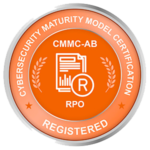Unleash the Power of Data with JMA’s Data Engineering and Integration Services
In the fast-evolving landscape of modern business, organizations are facing a pressing challenge: the need to harness the vast reservoirs of data at their disposal efficiently and effectively. The era of big data has ushered in unprecedented opportunities, but it has also presented a formidable hurdle—how to transform raw data into actionable insights. Complex, multi-cloud infrastructures, poor data management practices, and a lack of robust infrastructure and tools have left many enterprises grappling with this challenge.
Enter JMA, your trusted partner in navigating the intricacies of data engineering, integration, and automation. We understand that in today’s data-driven world, the ability to transform data into intelligence is not a luxury—it’s a necessity. That’s why we’ve tailored our services to empower businesses to turn their data into a strategic asset.
Our Mission
At JMA, we’re on a mission to accelerate digital evolution through enterprise data management. We recognize that the key to unlocking the true potential of your data lies in three core pillars: Data Engineering, Data Integration, and Data Automation. Let’s delve into how each of these pillars contributes to streamlining your operations and driving growth.
Data Engineering
Building the Foundation

Data Engineering is the cornerstone of any successful data-driven organization. Our seasoned teams of data engineers are equipped with cutting-edge technology and processing tools. They are poised to transform structured, semi-structured, and unstructured data into a goldmine of actionable insights.
Our Data Engineering Services Include
Data Collection & Summarization
Extraction, processing, transformation, and loading of data into various storage systems, including relational, non-relational, NoSQL, and cloud databases.
Data Storage & ELT / ETL
Bid farewell to data constraints. We’ll make it simple for you to scale your data infrastructure.
Data Modernization & Migration
Efficient migration of business data from legacy systems to cloud infrastructure or new platforms.
Data Pipelines
Development of production-grade data workflow pipelines to move, transform, and store data using various orchestration and management tools.
Continuous Integration & Deployment (CI/CD)
Expertise in deploying efficient production pipelines using infrastructure-as-code artifacts.
Distributed Real-Time Data Processing
Implementation of real-time and batch data processing systems across distributed environments.
Data Quality
Automated solutions for data correction, enrichment, standardization, and de-duplication.
The Outcomes We Deliver: Maximize the Value of Data
Our curated approach to Data Engineering delivers significant business advantages:
Faster Time-to-Value
Achieve accelerated results with our accelerators, frameworks, and proven services.
Improved Operational Efficiency
Leverage operational data to enhance efficiency and identify opportunities for improvement.
New Customer & Market Insights
Gain new insights into consumer behavior and inventory levels.
User Satisfaction & Empowerment
Enable self-service analytics for business users and analysts.
Enhanced Compliance
Seamlessly integrate regulatory and market data.
Increased Sales
Fuel sales initiatives with data-driven strategies.
Data Integration
Bridging the Gap
Data integration is the lifeline that connects disparate data sources, paving the way for informed decision-making. At JMA, we offer comprehensive data integration services that empower data-based software and consolidate digital information from various resources.

Unlocking the Power of Your Data: JMA’s Data Integration Services
In today’s fast-paced business landscape, data-driven decision-making is not just an advantage – it’s a necessity. We at JMA understand that harnessing the full potential of your data requires a robust data integration solution. In this article, we delve into what data integration is, why it’s essential for your business analytics, and how you can leverage the right tools and techniques to optimize your data.
What is Data Integration and Why is it Important for Business Analytics?
Data integration is the art of connecting disparate data from various sources, unifying them into a coherent format for comprehensive analysis. In an era where organizations accumulate vast volumes of data, these data sources often operate in isolation, leading to a series of challenges: data quality issues, contextual disparities, duplicated efforts, and a drain on time and resources. The result? Your data’s value remains untapped.
Data integration, when executed effectively, enables your organization to meet business demands, saving both time and money. It reduces errors, enhances data quality, and empowers your business users to provide insightful analysis.
The Right Approach to Data Integration
Every organization has unique data integration needs dictated by its business requirements. Therefore, selecting the right approach is crucial. The approach should answer the questions: who, what, where, how, and why – transforming data into actionable insights.
You can consider two primary approaches:
01
Persistent Staging Layer/Base Layer
This approach integrates data into a centralized location, such as a data lake or a persistent staging layer within a data warehouse. The data remains in its original form, offering flexibility and accessibility. Business users can add context and meaning to the data during analysis.
02
Transformation Layer
For a more structured approach, data can be integrated into a dimensional data warehouse. This approach involves transforming data from various sources into a unified business context. It ensures data governance and consistency but requires users to understand data logic and governance rules.
Implementing a two-tiered approach, combining a staging layer and a data warehouse layer, provides the best of both worlds. Business requirements should guide the choice of the data integration solution.
Best Practices for Implementing a Data Integration Solution
Data integration should be viewed as a business solution, not just a technical process. To ensure its success, consider these best practices:
Build the Business Case
Define why you need a data integration solution. Ensure all stakeholders understand the problem it solves and its business value.
Let Principles Guide the Process
Avoid over-engineering by identifying core principles and expectations for data integrations. These principles should include data loss protection, automation, and risk reduction.
Assign Roles for Accountability
Clearly define roles, including a stakeholder who owns the integration and a steward responsible for day-to-day management.
Select the Right Tools and Techniques
Choose tools and techniques based on your business needs and requirements.
Choosing Data Integration Tools and Techniques
Selecting the right tools and techniques can be challenging given the evolving landscape of data integration. Here are key considerations:
Cloud Data Warehousing
Evaluate whether to migrate your data into a cloud data warehouse. Cloud environments offer scalability, agility, and efficiency.
Cloud Provider Selection
Assess which cloud provider aligns with your business needs. AWS, Azure, and Google Cloud each have unique advantages.
Data Ingestion Methods
Determine the best way to ingest data based on cost, refresh frequency, and other factors.
Data Ingestion Tools
Several tools simplify data ingestion, including:

An automated data ingestion tool known for its ease of use and affordability.

Leverage serverless computing for data ingestion in cloud environments, saving costs and enhancing scalability.

An open-source data ingestion platform with a range of connectors for diverse sources.

Ideal for data replication within or outside the Qlik ecosystem, including connectivity to legacy RDBMS and SAP.
Transforming Your Data
Once data is extracted and staged, it must be transformed for analytics. Consider these transformation tools:

A development framework that combines SQL with software engineering best practices, automating documentation and enabling version control.

Suitable for those in Azure seeking native integrations and offering a low-code or no-code interface.

A flexible platform for workflow management and dynamic pipeline generation.

Tailored for Snowflake, this tool accelerates data transformations and offers a code-first GUI-driven user experience.
Choosing the Right Data Warehouse
Modernize your data warehousing by considering cloud data warehouses such as:

Renowned for its flexibility and scalability, Snowflake offers decoupled storage and compute, making parallel workstreams effortless.

Allows fine-tuning of your environment for those with specialized expertise.

Boasts a serverless model, with costs tied to query performance and native integration with Google Analytics.

Offers auto-scaling functionality and the option of serverless or provisioned resources.
Empowering Business Users
Lastly, provide your business users with the tools they need to interact with data seamlessly. Implement a Business Intelligence (BI) tool or platform to create rich visualizations and gain insights.
Data integration might seem intricate, but it’s a critical step in unlocking the value of your data. With the right approach, tools, and techniques, you can make your data accessible and actionable, driving informed decision-making. Discover the power of data integration with JMA and take the first step towards a data-driven future. Contact us today to learn more about how our data integration services can transform your business.
Data Automation
Efficiency Unleashed

Data automation is the secret sauce that streamlines repetitive tasks, eliminates bottlenecks, and ensures data flows seamlessly. Our automation solutions are designed to optimize your data operations, allowing your team to focus on innovation and growth.
In conclusion, JMA Resources, Inc. is your dedicated partner in overcoming the data challenges of the modern era. With our expertise in data engineering, integration, and automation, we empower your organization to harness the full potential of your data assets. Unlock actionable insights, accelerate decision-making, and drive growth with JM as your trusted data partner.
Unlock the Power of Data with JMA’s Data Automation Services
In today’s data-driven world, organizations are faced with an ever-expanding landscape of data sources and types. To harness the true potential of this data, seamless integration and automation are key. At JMA, we offer cutting-edge Data Integration Services designed to help you streamline your data processes, enhance data quality, and accelerate data-driven decision-making.
What Is Data Automation?
Data automation is at the heart of our Data Integration Services. It empowers organizations to harness the power of data without the need for manual human intervention. By automating data ingestion, transformation, validation, cleansing, integration, and analysis, data automation paves the way for faster, more informed decision-making.
One of the prime examples of data automation is Extract, Transform, and Load (ETL). It allows for the extraction of data from various sources, its transformation into a structured format, and the seamless loading of data into accessible systems for end-users to leverage in solving critical business challenges.
Scheduled
Automate data processes to run at specific times or cadences, such as nightly data pipeline runs, ensuring timely processing of collected data.
Triggered
Initiate data processes automatically when specific conditions are met or system events occur. This ensures resource efficiency and eliminates unnecessary processing.
Streamed
Process raw data almost instantly with streaming pipelines, perfect for organizations accessing data in real-time from sources like financial markets or social media.
Benefits of Data Automation
Embracing data automation offers a myriad of benefits for your organization:
Improved Data Quality
Minimize the risk of human error by ensuring consistent and structured data loading.
Cost Savings
Leverage computing resources for data analysis tasks, reducing labor costs.
Enhanced Insights
Free data engineers to focus on deriving insights, while data scientists work with complete, high-quality, and up-to-date data.
Improved Productivity
Automate data processing and analysis, reducing the time spent on repetitive tasks.
Faster Analytics
Efficiently process vast data volumes from disparate sources, standardize and validate data before loading it into a unified system.
Cost Savings
Leverage computing resources for data analysis tasks, reducing labor costs.
Common Data Automation Challenges
While data automation offers immense advantages, it’s essential to be aware of potential challenges:
Initial Investment Cost
Implementing data automation tools may involve upfront costs, but the long-term savings are substantial.
Evolution of Team Roles
As data engineers shift from manual tasks, roles may evolve towards leveraging automation solutions and ensuring system configurations.
Learning Curve
Introducing new tools may have a learning curve; however, the benefits far outweigh the initial challenges.
Human Intervention for Troubleshooting
Critical workflow tasks may still require human intervention in case of pipeline failures, but our solutions minimize such occurrences.
Crafting a Data Automation Strategy
Before diving into data automation, we recommend a strategic approach:
01
Prioritization
Identify processes that consume the most time and start by automating those with a high return on investment.
02
Task Identification
Analyze manual steps in processes to determine which tasks are best suited for automation.
03
Tool Selection
Choose the right data automation tool tailored to your specific requirements.
04
Incremental Implementation
Gradually automate parts of a process to ease the transition and mitigate risks.
Our Data Automation Tools
At JMA, we provide cutting-edge data automation tools designed to meet your unique needs. Our tools offer:
Scalability
Quickly scale to handle growing data processing demands.
Observability
Robust logging and monitoring capabilities ensure data integrity and expedite troubleshooting.
Security
Advanced security features, including encryption and access controls, safeguard your data.
Integration
Seamless integration with other data tools and systems for end-to-end data automation workflows.
Ease of Use
User-friendly interfaces for configuring, designing, and managing data automation workflows without extensive coding or technical skills.
Empower your organization with the full potential of data through our Data Integration Services. Unlock the future with data automation.


















